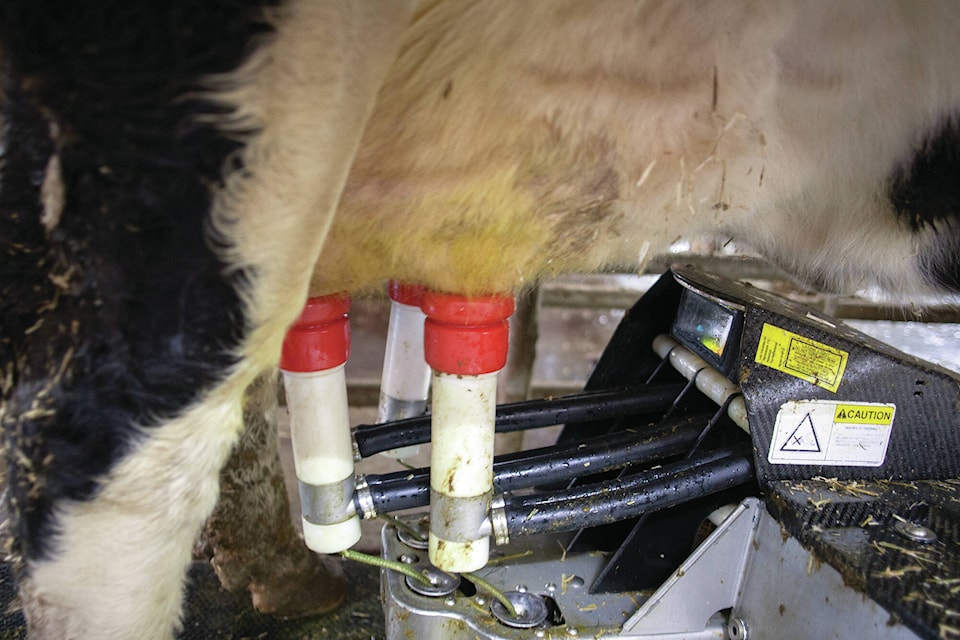For Calvert Haustein, helping run Haustein Farms in partnership with his brother and father and their families is a matter of legacy.
The farm, located just south of the Hamlet of Erskine, has been owned and operated by the family for over 115 years.
“It gives us motivation to do the best we can,” said Haustein.
Haustein Farms is a diversified farm with a 110-dairy cow herd and 80 cow beef herd. To feed the animals, the farm also grows 2,000 acres of crops.
As far as their dairy operations go, two things set the farm apart from the rest.
First, unlike 90 per cent of the dairies which operate with Holstein Friesian cattle, according to Haustein, their farm uses Fleckvieh cattle. Holstein says that the Fleckvieh are an animal with a lot more meat on them which can fatten properly and allow the farm to make extra money on them when they are eventually sent to slaughter.
“Holstein cattle have no loin,” explained Haustein.
“If we send them to slaughter, we can’t make money.”
The second aspect that sets the dairy operation apart are the installed robotics.
When the partners decided to update the barn, they did some research, with Haustein’s brother even heading into the United States and Ontario to look at options before deciding what to do.
“It was a big capital expenditure, so we went all in together.”
Contrary to what people may envision, the farm does not have robots running around the farm doing chores.
However, the dairy has two robotic milking machines in stalls similar to a cattle squeeze into which the cattle are enticed to enter. Using information on a collar, cameras and retained data, the machine knows precisely where the udder is and where to attach. Once it attachs, it milks the animal, releases, and the animal wanders out the other end of the stall while the machine resets and waits for the next one.
Thanks to the robotic nature of the equipment, the dairy can operate 24 hours a day seven days a week, only shutting down for a period every eight hours in order for the equipment to be sanitized … which it also does itself.
One of the big things when setting up the barn, Haustein says, was being in mind of keeping things environmentally friendly. The water that is used to flush the barn is all recycled lagoon water. Fresh water is used for the equipment coolers, but once it cycles through the coolers is then used to water the animals.
“The more fresh water, the more milk they produce,” said Haustein.
The ventilation and heating system for the structure can also be accessed by smartphone, meaning that changes can be made on the fly from anywhere. With these innovations, the dairy has been able to find small natural gas and energy savings throughout the operation.
On the beef herd side of the operation, the farm operates as a cow/calf operation with a feedlot component as well. The cattle are finished right up until sale in the feedlot.
Another way the partners work on saving money is by tackling new projects themselves every summer. This summer included the placement of a concrete pad for some new-to-the-farm grain bins.
“They need some welding and cutting,” said Haustein.
“We take on projects like that.”
The kids, the sixth generation on the farm, also help out.
“It’s an efficient way for us to make a living. We share the equipment, land-base, and the income,” Haustein said.
